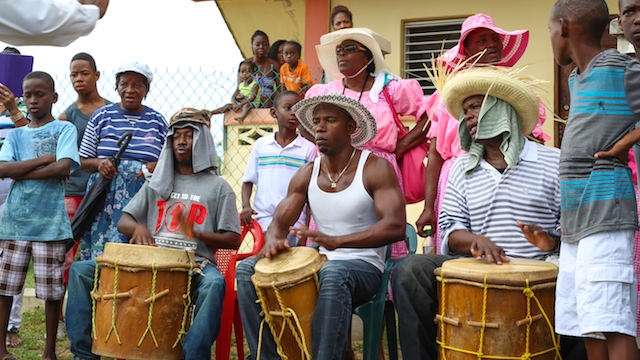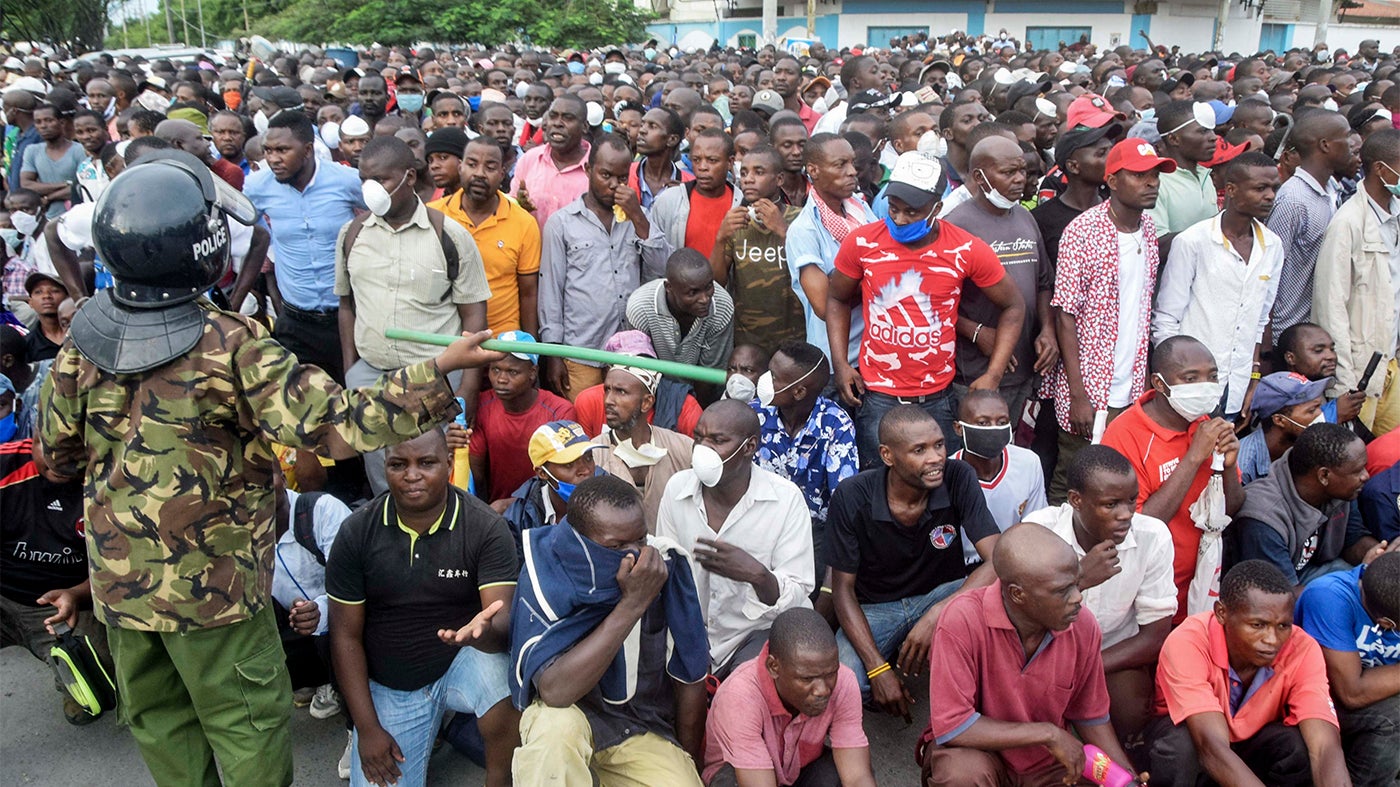BACKGROUND
To begin this post, let me give you some background on the Samburu Tribe. This is a resident Indigenous
group that has been present in East Africa for several thousand years. They are a Nilotic tribe and thus
they share ground, territory and a few languages with other East African tribes such as the Maasai, but
have their own unique culture and way of life compared to these other peoples. The Samburu are a
pastoral people. This means that they are traditionally herders and practitioners of animal husbandry
over the more agriculture or hunter gatherer like peoples that existed in North America. Samburu people
usually herd cattle, goats and sheep, occasionally camels, and make a living off of their milk, meat and
other resources they find in their environment. They are defensive by nature and have never been a
warrior based society, though there have been recorded clashes with other tribes. An interesting point
about the Samburu people: They are one of the few Indigenous peoples in Africa, and the world,
that were affected very little compared to other Nations and groups by colonialism. The British
occupied East Africa in the past, along with other European powers such as the Netherlands,
Germany and others, but none of them targeted Samburu lands. The land they traditionally grazed
their animals on was arid for most of the year, and was unsuitable for settlers because of that.
Today, the Samburu retain a fair amount of their pre contact traditions and culture because of
that, including a unique social system, a gerontocracy. Gerontocracy is a societal system where the
oldest individuals hold the most power over the community, and Samburu elders control their own tribes.
“The power of elders is linked to the belief in their curse, underpinning their monopoly over arranging marriages and taking on further wives. This is at the expense of unmarried younger men, whose development up to the age of thirty is in a state of social suspension, prolonging their adolescent status.”
www.atlasofhumanity.com/samburu
(Samburu Elder and Women in ceremonial garb)
The Elders of the community are believed to be capable of bringing down Nkai’s (The creator spirit
for the Samburu) wrath in the form of a curse which can bring misfortune and bodily harm. Young
men from 15 - 30, called Morans (Warriors), are kept away from the Samburu tribes and devote
themselves entirely to defending the cattle and livestock of the tribe and expanding their grazing
ground, keeping them safe from predators, and defending against other pastoral tribes, alone or
more often in specially formed bachelor groups. Nowadays, Samburu people do still practice their
pastoral traditions, but also live in more developed areas, and partake in the safari tour industry, among
other modern jobs. Traditionally, Samburu women are considered caretakers, mothers and the main
body of the community, besides the Elders, who are respected above all others. Unfortunately,
women are mistreated often due to practices that are now considered problematic…
THE ISSUE AT HAND
In Samburu culture, when a woman comes of age, or is close to marriage (two things which can be
disturbingly close, more on that later) , she is circumcised. This is already a debated topic. Many
groups frown upon the practice and it is often called female genital mutilation . For the Samburu
people, who often lack modern medicines, antiseptics and treatments, it can result in infection and
health hazards. This is a practice that is seen very rarely in Indigenous communities, and one that has
attracted a lot of negative attention from local governments and the international community. On top of
this, girls of this tribe can and are married off at very, very early ages, with some marriages occurring
between older men, and girls no older than 10. This has also not been very popular, especially when
the knowledge is made more widely available. Rigid tradition places them in the role of caretakers and
mother before all else. And when younger girls are ready for marriage, the ceremony is more for political,
material and monetary gain, as trading away a girl in marriage can secure all of the above for her family.
Cattle and other resources that are precious commodities in this community are some of the driving
factors behind this child marriage issue. Not to say this isn’t a new issue either, it is the tradition of the
Samburu, and that’s one of the hardest things to swallow. Another note is the pandemic of Covid 19
that has recently swept up the world in turmoil, and the Samburu people, and this issue in particular
has heightened because of it. Girls who no longer go to school are often forced back into households
unfit to accommodate them. The lack of income from safari tourism and increasing pressure from climate
change pushes many of these Samburu families to give away their daughters for food and resources.
(Traditional Samburu tribeswomen collecting water)
“Sometimes we go hungry and can’t find clothes to put on. (Her mother) Started marrying us off, so that she can find money to bring up her other children.”
A quote from a 15 year old Samburu girl interviewed by Stephanie Sinclair and Jeremiah
Kipainoi, new york times journalists
Women in these communities are viewed more often as a resource. Those that have access to schooling
are rare, and they often have reduced access to education, financial resources and employment.
Child marriage is common around the world, sadly, and an estimated 12 million girls are subjected to
child marriage every year, usually arranged. In fact, it is estimated that worldwide there are more than
650 million women who were married off as children. Usually due to culture and circumstance, in the
case of the Samburu. The Government of Kenya, the country where almost all of the Samburu live,
but more specifically, President Uhuru Kenyatte has put out pledges to eradicate child marriage and
FGM (Femae Genital Mutilation) by Q1 2022, but many doubt this may be entirely possible in that
amount of time. Now, this is obviously not Ideal, in a perfect world no child marriage shoud be occuring,
because of Covid, is this process and the push against it erasure of that indigenous groups
culture? Probably not, but it raises some interesting questions.
(A police conflict in a Kenyan slum. Conflict is on the rise in Kenya due to Covid-19 restrictions)
QUESTIONS AND REFLECTIONS
The Objectives of marriage in the Samburu people is to ensure a bloodline, to carry on a family, and to
ensure a good relationship with other families through the trade of goods and a young bride. The
unintended result, unfortunately, is that in times of desperation, such as during the Pandemic, women
are married off at earlier and earlier ages as their families depend on the resources given by their
better off neighbour's from these marriages, an idea turned sour by poor situations. In a traditional sense,
these marriages are celebrated events that tie the community together. The political significance in
this situation is mostly the relation of the Samburu tribe and the groups outside it, and across the wider
world. These child marriages pin the government against the people, and in the end that leads to more
impoverished conditions. And it's spurred a lot of negativity after it was widely revealed to be an Issue.
But in this situation, is disregarding the practice entirely right? Or is there a better option out there that
preserves the culture? When women and girls undergo this process and are married off, is it only just
the poor conditions to blame? The whole situation can be connected to Canada through a marginalized
bias against indigenous women in Canadian history, and most recently the increasing trend of missing
and murdered indigenous women and girls. Poor conditions, but also an underlying bias link this issue
between the two groups, in a threat towards the Indigenous women and girls of the community.
Thankfully, nonprofit organizations like the Pastoralist Child Foundation, led by Siraria Leadismo, and
the Government of Kenya have made several attacks against child marriage in this setting, through
fundraising initiatives, onsite support and seminars, and classes for government officials, community
leaders and children. In a situation like this, knowledge and information is power.
(A member of the PCF gives a seminar in a North Kenyan classroom)
Bibliography/References
Atlasofhumanity.com. “Kenya, Samburu Tribe.” Atlas Of Humanity, www.atlasofhumanity.com/samburu.
“'These Girls Are Being Cut and Married in Droves'.” The Story INSTITUTE, www.thestoryinstitute.com/samburu.
“A Warrior for Girls' Rights. Interview with Samuel Siriria Leadismo.” Safe World for Women, www.asafeworldforwomen.org/kenya/pcf/pcf-news/4985-warrior-for-girls-rights.html.
Sinclair, Stephanie, and Jeremiah Kipainoi. “'These Girls Are Being Cut and Married in Droves'.”
The New York Times, The New York Times, 10 Dec. 2020, www.nytimes.com/2020/12/10/opinion/kenya-covid-
child-marriage.html.








/GettyImages-637563890-e465202eb7e04293a21d8ab7c272a6d1.jpg)


